This is part 1 of 2 of Carolynn’s trek to Hibbing.
Minnesota in January?
I had been assigned a story on Iron Range Porketta for Cook’s Country, and Hibbing, Minn., was the place to try some. It was only after I started planning the trip and was booking my hotel that the woman on the other end of the phone said, “Be sure to dress warm. It is very cold here in January. VERY COLD.” I looked at the weather report. Turns out the average temperature in Hibbing in January is negative 4 to 18 degrees. Egads.
I had imagined that Iron Range Porketta was similar to porchetta, a traditional Italian dish. In Italy, it is a whole pig that is deboned, stuffed with herbs, and then slow-roasted until it falls apart. I’d had similar (but smaller-scale versions) that were a skin-on pork shoulder, or even a pork loin with the pork belly and skin attached (I got this at Porchetta in New York City—amazing). And while it is certainly similar, porketta definitely has its own identity.
As I began looking into what makes Iron Range Porketta distinct (besides the spelling), I reached out to several sources and learned a great deal about the people of this area. I began at the University of Wisconsin with a historian named Ruth Olson. She put me in touch with the author of The Minnesota Ethnic Food Book, Anne Kaplan. It had been about 20 years since she had been to the Iron Range, but she was able to fill me in a bit on the history of the area and the origins of many of the foods.
In the late 1800s to early 1900s, immigrants from all over the world moved to the locale in huge numbers, working the iron mines in Minnesota, Wisconsin, and North Dakota. Sheer numbers of Germans, Swedish, Norwegians, Canadians, Italians, Danish, English, Irish, Finnish, Austrians, and Russians moved in and learned to adapt their recipes to the ingredients found in the area. Several recipes that have stuck in the area are porketta, potica, and pasties (a meat pie, sort of like beef stew in a pastry crust, shown below).

I scoured online chat boards and contacted as many locals as I could find, trying to get recommendations and contacts for my time in Hibbing. I’m certainly not the first person to be interested in the food of Minnesota. In fact, there is a great book by James Norton entitled Minnesota Lunch that explores food—specifically, lunch food—in Minnesota. A friend of a fellow test cook was able to put me in touch with James Norton. He graciously shared his research and confirmed what others had already told me: When it comes to porketta, the must-visit spots are Fraboni’s, Zimmy’s, and Cobb Cook. He put me in contact with the owner of Fraboni’s, who proved to be one of the best resources I found.
Somehow, despite the cold temperature, I convinced my husband to accompany me. He would act as a photographer and, as he used to live in North Dakota, a bit of an interpreter for this rather distrustful and private New Englander. (Me.) We flew into Duluth, grabbed a car, and headed to Hibbing. They were experiencing a bit of a heat wave: The temperature was in the 30s.



After checking into our adorable accommodations at The Mitchell Tappan House, we drove around town to get our bearings, and then parked the car and walked over to the public library. The librarians pointed us in the direction of the local cookbooks section. We tracked down some recipes and a little history on the area.

The librarians also strongly recommended we visit the Minnesota Discovery Center in nearby Chisholm. More on that later.
Hibbing is known for many things, including being the childhood home of musician Bob Dylan (né Robert Zimmerman). After leaving the library, we headed to a local Bob Dylan-themed restaurant, Zimmy’s, for some dinner. It was one of the places we had been told had a great porketta sandwich.

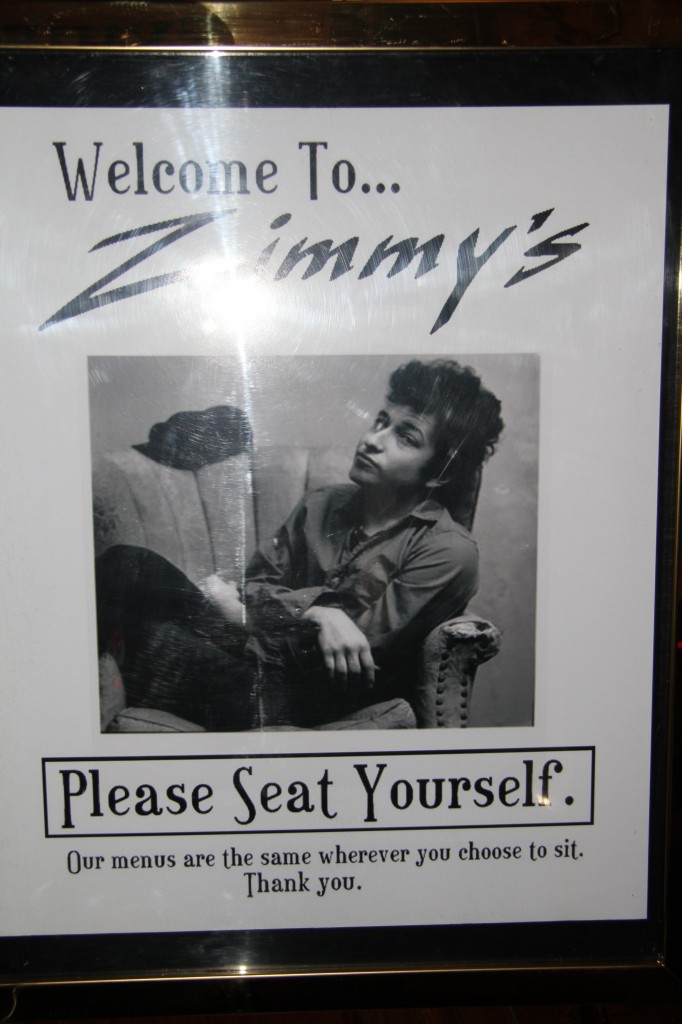
We sat at the bar and struck up a conversation with Patrick, who turned out to be the manager. When he heard we had never dined there before, he immediately said, “You’ll have to try the porketta sandwich. It is what we are known for.” Perfect. We ordered the sandwich and shortly thereafter were served a roll with a heaping portion of fine and thick shredded pork.
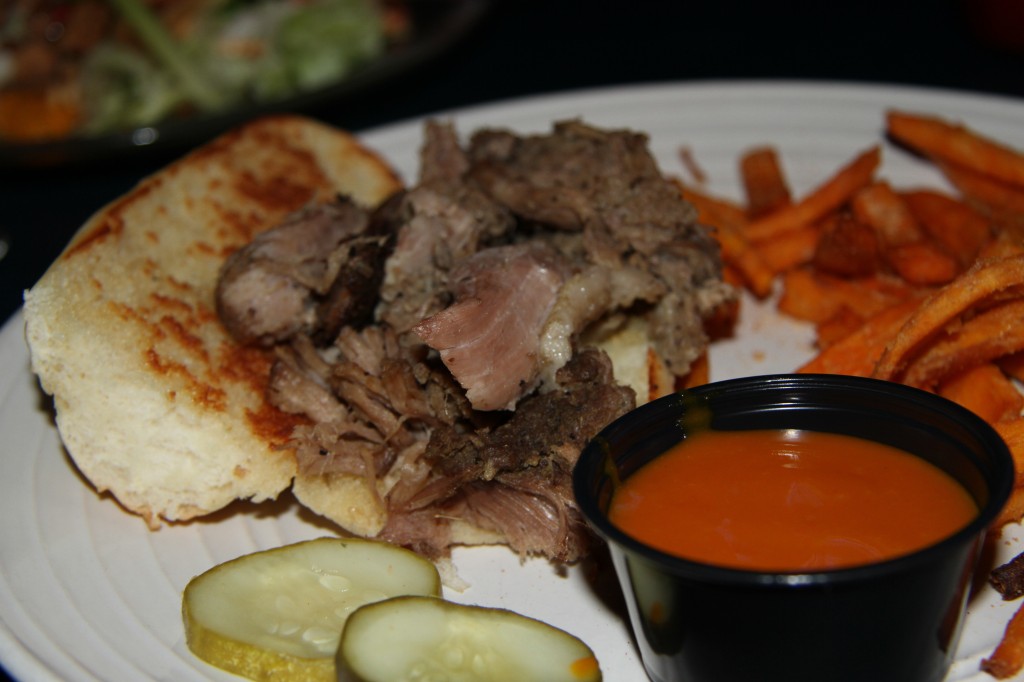
We explained to Patrick that we were in town to research porketta and asked him to tell us everything he knew. He said the sandwiches are typically served plain but that lots of people like mayonnaise, Miracle Whip, yellow mustard, and even ketchup! We tried all varieties and agreed that the sandwich didn’t need any condiments. It had a great meaty flavor accented with some pepper, garlic, and fennel.
Patrick then said that you could find uncooked porketta roasts in almost every grocery store in the area (his favorite was sold at a store named Fred’s in the small town of Nashwauk), but that if you traveled further than a few towns away, no one will have ever heard of porketta. We asked if Zimmy’s made their porketta in house and were told that they actually bought it from Fraboni’s. We had plans to visit there tomorrow. We called it a night.
The next morning we woke up with a busy day planned. (We asked Pam at the inn if we could possibly borrow a little freezer space.) We had some time before our first appointment, so we drove over to Fred’s to see if we could learn about their porketta.

The butcher at Fred’s didn’t seem like much of a talker. But, he did tell us that we could cook the porketta in a roasting bag or a pan with some water at 300-350 degrees until “it’s done.” When we asked what spices were rubbed in or on the pork, he simply handed us a packet of their “Porketta Seasoning Blend,” closed the door, and retreated into the kitchen. Guess this was all the info he was willing to share.
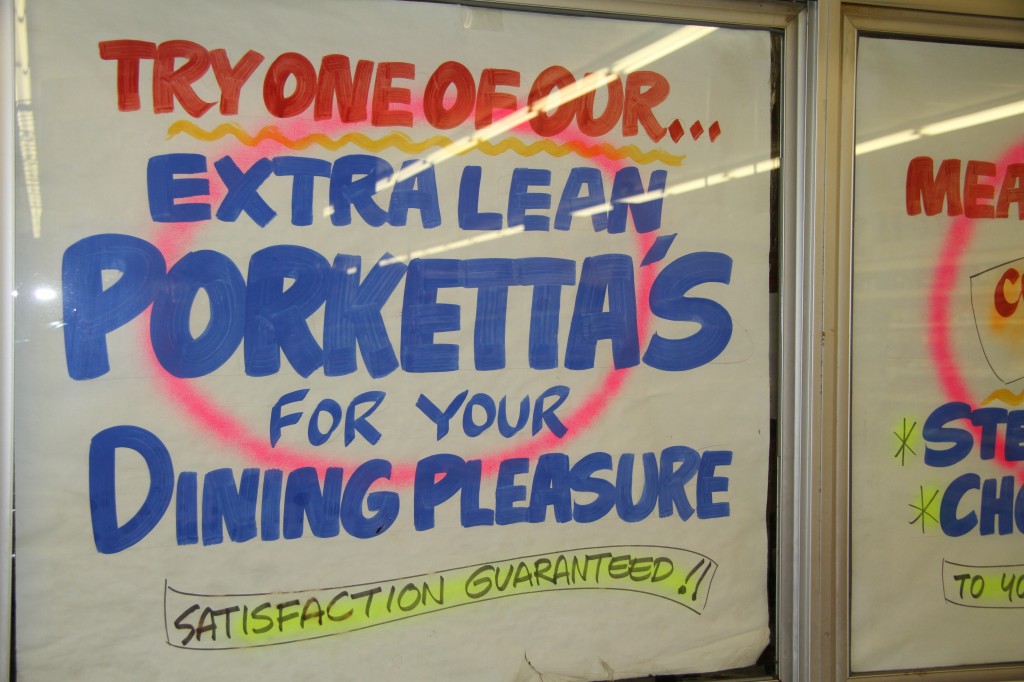
I’d been told by James Norton that the people of the Iron Range could seem a bit private and unwelcoming to strangers. I saw what he meant at Fred’s. But the butcher was the exception to the rule—everyone and everywhere else we visited were the most bend-over-backwards, warm, generous, helpful, and welcoming people I have possibly ever met.
We then headed to our first scheduled appointment of the day, Cobb Cook Grocer. Cobb Cook has been owned by the same family for 39 years. The current owners, Bruce, Dan, and Randy Peterlin, bought the shop from their uncle. Prior to that it was owned by a different family, but they have always made the same porketta.
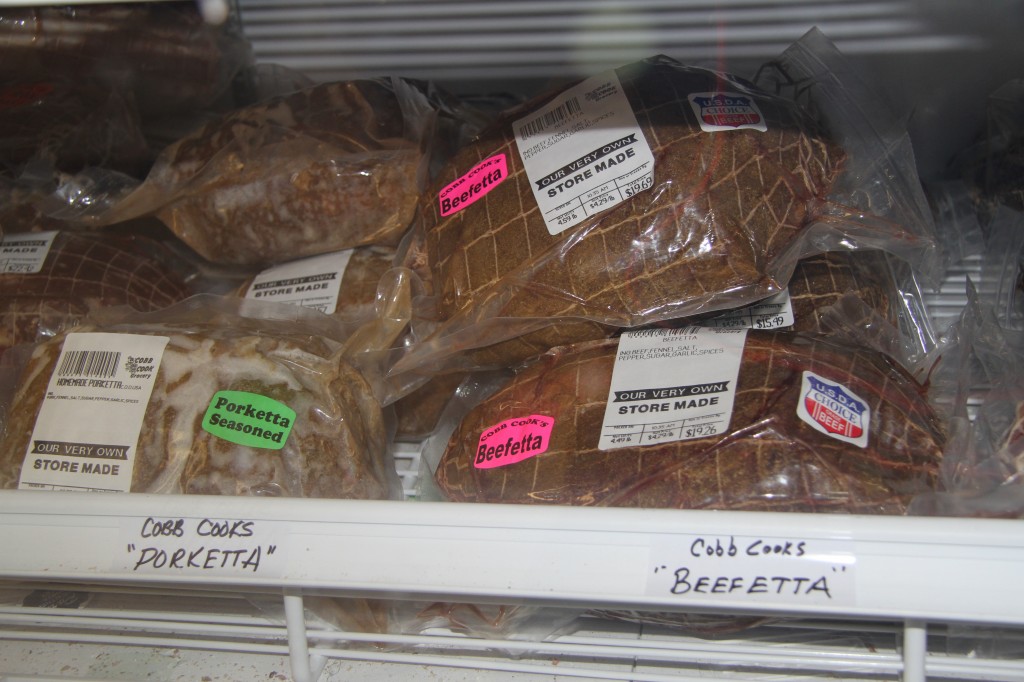
Not only did they sell their own packaged spice blend, Cobb Cook was more than happy to show us around and chat porketta (with the exception of the actual quantities of ingredients). Traditionally they used pork shoulder, and that is what they prefer to eat, but when people began trying to eat healthier they started making porketta with the leaner pork loin meat and even turkey (turketta). They also serve their porketta as a deli meat. It is cooked less than the shredded variety, cooled completely, and then sliced extra thin on a deli slicer. No matter what, they informed us, the porketta should be served as a sandwich.
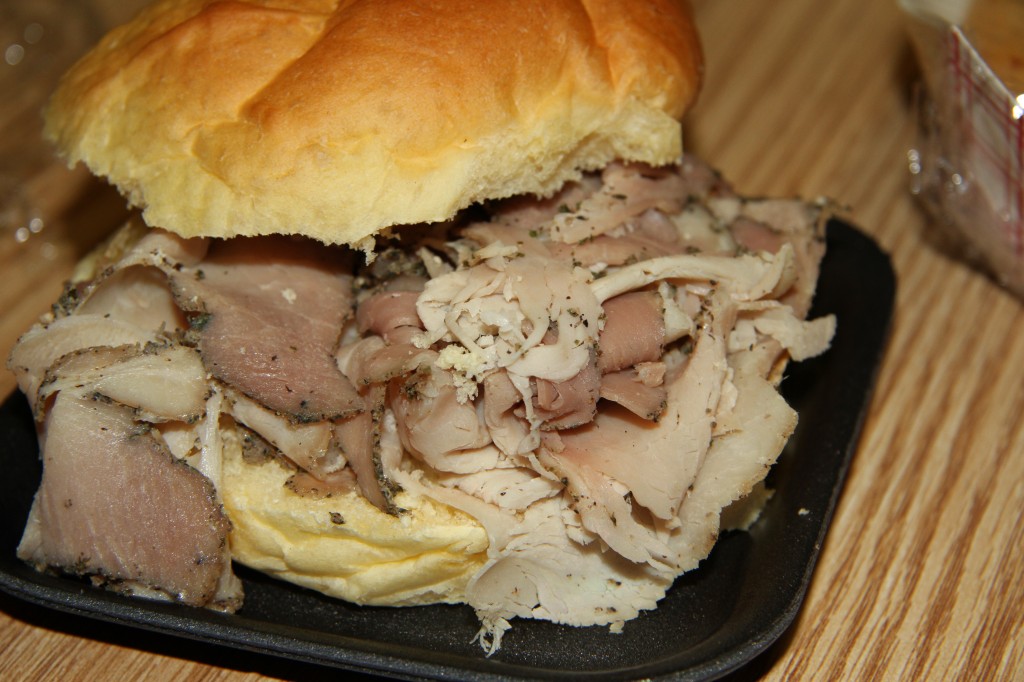
We left Cobb Cook and headed over to Fraboni’s to meet with owner Mark Thune. Mark has worked at Fraboni’s, believed to be the first operation to manufacture porketta wholesale, over 35 years. He started working for Leo Fraboni, the founder of the business. One thing that distinguishes Fraboni’s from other porketta is that they use fresh fennel. It wasn’t an easy thing to purchase in the area, so they grow the fennel themselves in two gardens, with one right outside of their distribution warehouse.
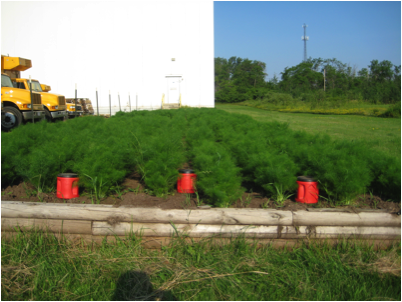
They harvest it over the summer and then freeze it for use all year. They believe so much in the importance of fresh fennel that one year, when their crop was ruined and they had no fresh fennel, Leo refused to make porketta. People in the area begged him to make it, even without the fresh fennel, but he refused. It was a labor of love for Leo: His mother brought her porketta recipe from Italy and originally made it for the miners to eat, cold, at lunch.
Mark was gracious enough to let us visit their operation and watch them make porketta; even today, every porketta they sell is made entirely by hand exactly the same way it was made when Mark began working there. They remove the fat from a pork butt, butterfly and score the inside, and season it with fennel, granulated garlic, salt and pepper.
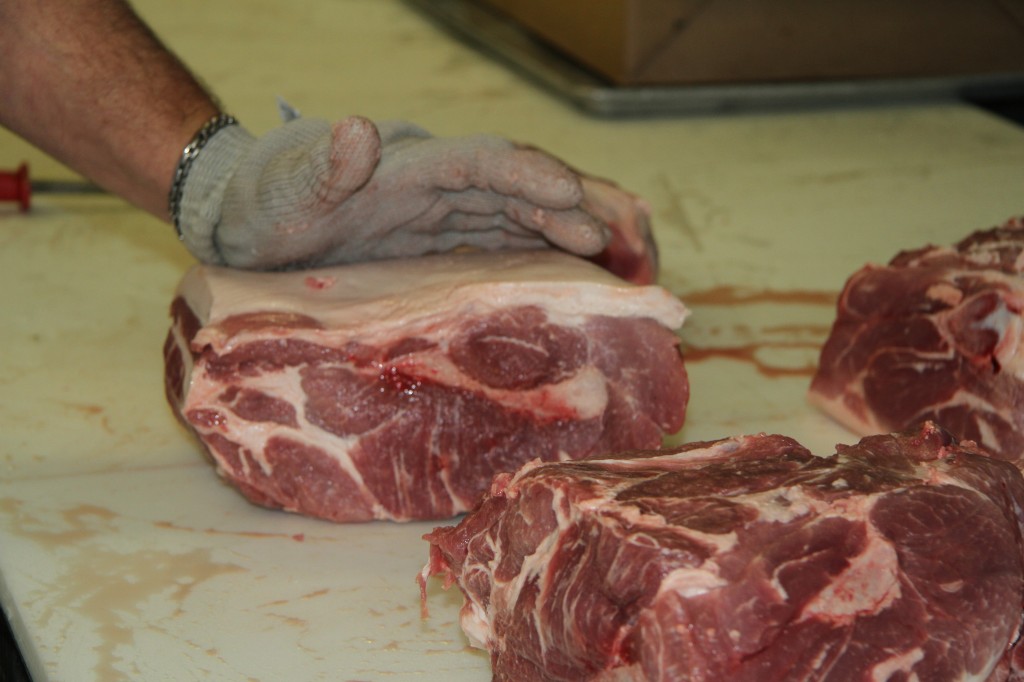
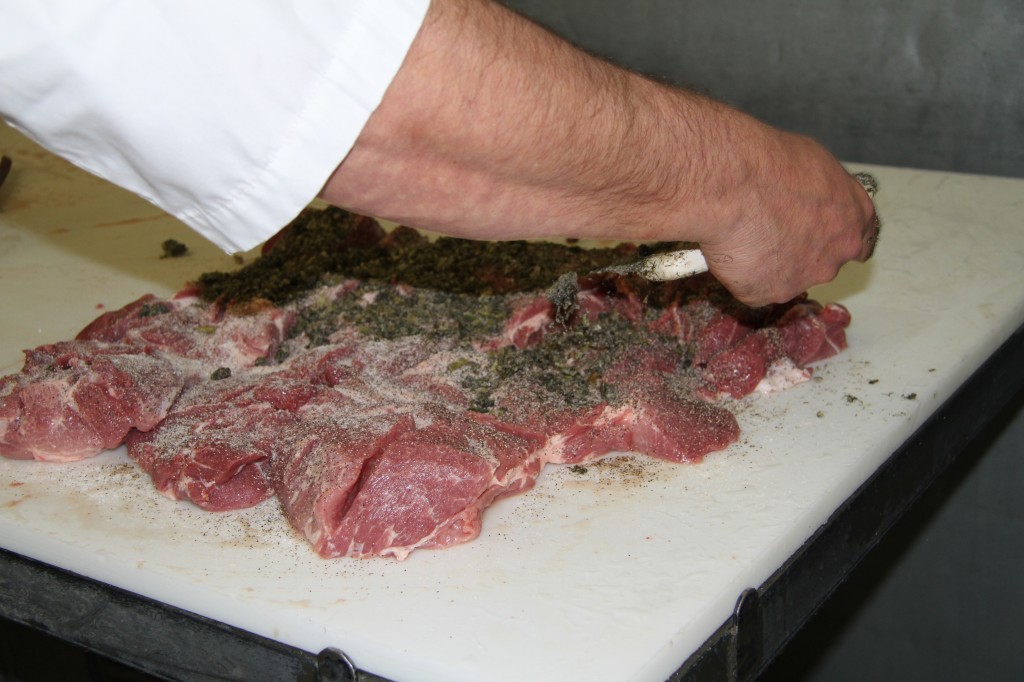
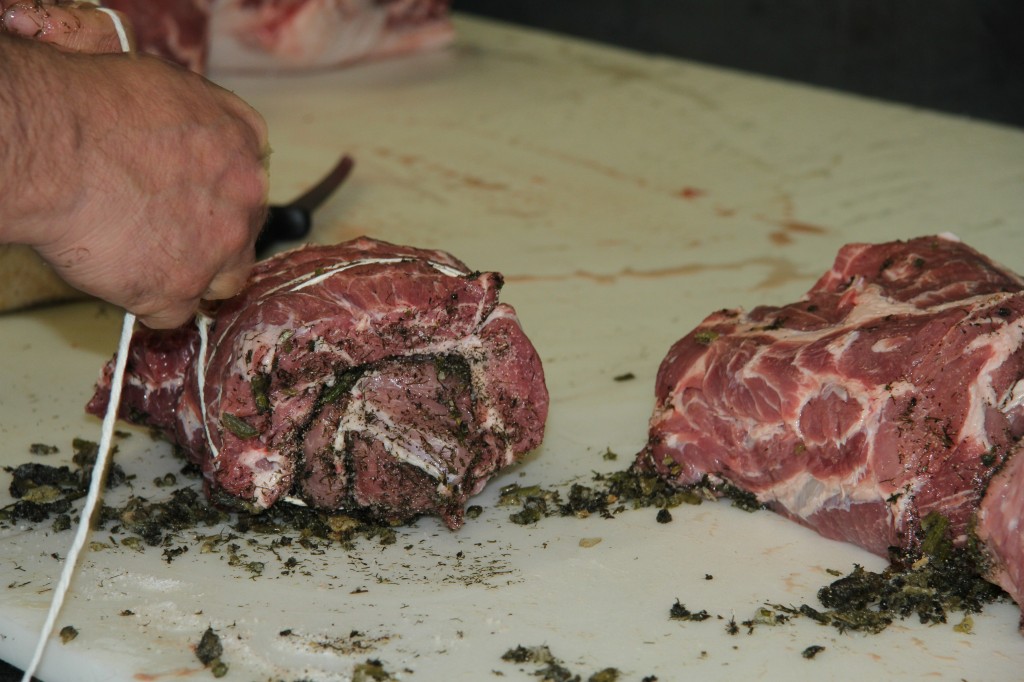
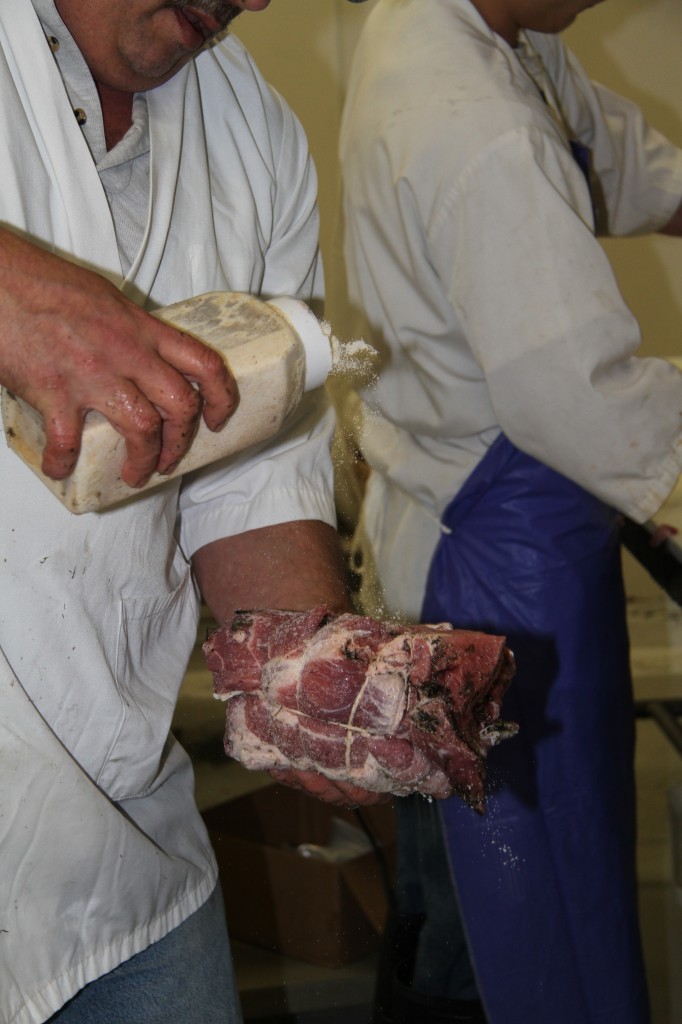
It is obvious that Mark loves what he does and believes in their product. While we were visiting, Leo Fraboni’s widow arrived to pick up some porketta. It is clear that in many ways, Fraboni’s is still a family business.

Next up: The Hunt for Potica.


